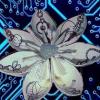Search the Community
Showing results for tags 'nicholson school'.
-
Beaudrie Opera House Theater District, Freedom City, New Jersey Tuesday November 12, 2024. 10:20 AM A couple of weeks ago Headmistress Summers had spoken with a few her students about an opportunity to assist a field trip for several of the youth attending the Nicholson School to attend a performance by the Freedom Youth Philharmonic for several area elementary schools. Michael Adon, Sarah Thatcher and Jack Davydov had volunteered. Earlier that morning, the trio had been transported over to the Nicholson campus in nearby Port Regal, where they had met the teacher leading the field trip (Ms. Houston) and the group of forty some students that were attending the performance. They had then loaded onto a school bus and made the trip over to the Theater District in downtown Freedom City. The level of excitement for the students varied considerably, ranging from very excited for many of the younger students (those nine or ten years old) to a more resigned indifference with the teens in the group. The area around the Beaudrie Opera House had been rather chaotic, with more than a dozen school buses all dropping off loads of elementary school students to attend the performance. Michael, Sarah and Jack had managed to help keep all the Nicholson students together and guide them into the building, making a stop by the restrooms for any that needed to use them, before heading off to find the groups seats in large venue. It was perhaps even more chaotic inside the building than out, as hundreds of students were gathered, many chatting away as they waited for the performance to begin, teachers and other chaperones keeping an eye on them and making one last headcount to ensure everyone was present. Sarah found herself sitting near some of the thirteen and fourteen year old students, many of whom were focused on their cellphones or otherwise looking around for distractions. One of the older girls looked particular bored and restless, Sarah thought she recalled her being introduced as Victoria. Jack was seated among some of the ten-year-olds, his gentle nature having won them over on the bus ride, despite his imposing height and frame. Among the group were two twin girls, Madison and Mary who seemed very excited to see the performance. Backstage….. Lynn Conners stood among the other members of the Freedom Youth Philharmonic as they waited for the que to take the stage. The blonde sixteen-year-old was wearing a long black evening dress with sleeves that went to her elbows. She was holding her violin and bow in her hands (her sheet music already out on a music stand by her chair) as she took a deep breath to try to steady the many emotions she was feeling. Although she had been part of the youth orchestra for a couple of years back in her timeline, it felt so very different here. For one thing, all of the other performers were unknown to her, as this timeline’s versions of any that she had known in her timeline being six years younger, and thus not yet in the orchestra (if they were even learning classical music here). Even the conductor was different in this timeline. As if that were not enough, there was also the fact that Lynn had managed to gain a spot in the orchestra outside the normal tryout process (in no small part due to her adopted family’s support of the orchestra over the years). The blonde girl let out a sigh as she opened her eyes again but did not focus on anything in particular as she continued to wait to go out to her seat…..
- 47 replies
-
- golden star
- arctus
-
(and 4 more)
Tagged with:
-
The Nicholson SchoolThe Nicholson School, located in the Port Regal neighborhood in Freedom City, is a small private academy for children from kindergarten to eighth grade. Attendance is limited and extremely difficult to come by, though the student body shows a wide mix of backgrounds and nationalities. Theschool is semi-residential and runs all year on a system of quarters with three-week breaks in-between. Its headmaster is Christina Wheeler, a Harvard graduate in finance who retired from a lucrative position on Wall Street to take on the responsibility. The school works hard to maintain its veneer of anonymous respectability, the better to conceal its secrets. Like the Claremont Academy to which it feeds, Nicholson is populated entirely by students of extranormal origin. When Duncan Summers took over Claremont Academy in the wake of the Terminus invasion, it was assumed that there were not sufficient numbers of superpowered children to warrant the establishment of a lower school. The United States government thought otherwise, and were in fact able to secure a population of so-called “Terminus Babies” for supervision and training in their own program. The government program was widely considered a debacle, despite scattered successes, and was eventually dissolved, but the need for superhuman schooling continued. Plans for a lower school in the same vein as Claremont remained on the drawing board for years, due to the substantial logistical difficulties entailed in the primary education of superhuman children. Unlike high schoolage students, who could be presumed to be ready for a modicum of independence, most primary schoolchildren required and desired close parental contact and supervision. Parents, too, would be less willing to allow their young children to be taken away for schooling, no matter how dangerous their powers and how attentive the school personnel. Accommodations would have to be made for entire families to be moved and housed near the school. The range of ages and developmental stages at the new school would also be much wider than at Claremont, requiring an entirely different educational model. Though the school was regarded as an excellent idea in theory by much of the super-community, it languished for lack of a dedicated leader to put plan into action. In 2003, Joshua Wheeler, son of Christina and Roger Wheeler, made headlines in New York City when he lifted and threw a car that was pinning a pedestrian at an accident site. This was not wholly newsworthy in New York, which has a fair share of superheroes, but for the fact that Joshua was only four years old at the time. His parents, retired heroes themselves, were surprised at the early onset of their offspring's powers, and immediately began looking for an appropriate place where their special child could receive training and education. Upon realizing that there was nothing available, Christina, whose enhanced intelligence and charisma had made her a formidable force in business, turned her attention to becoming an educator. Barely a year later, The Nicholson School was founded in Freedom City, a superhero hotbed where no one had heard of Joshua Wheeler. Enrollment in the first year was very small, barely a dozen students across the entire range of grades. As word of the new school spread to those who needed it, though, enrollment began to grow. A unique educational program, Nicholson now draws students and families from around the world to its Port Royal enclave. LayoutThe physical property of The Nicholson School consists not only of its education building, but also a dormitory for boarding students and a collection of several dozen private homes dubbed the “family village.” Education BuildingThe Nicholson School itself is contained in one large three-story building, specially constructed for the purpose in 2005. The education building combines cutting-edge safety technology to render it impervious to most physical threats with state-of-the-art understanding of optimal school layout. The classrooms are large and airy, each with at least one wall of adjustably-tinted windows to provide natural light and visual stimulation for students. Every classroom is wired for comprehensive internet connectivity, with security that renders the network as safe as any other part of the building. The second floor is entirely devoted to classrooms, with multipurpose rooms on the first and third floors that can be converted as need allows. The third floor is devoted mainly to non-classroom-based education. Science labs for physics, chemistry and engineering are all located here, as well as an art studio and a music room. The school library is also located on the third floor. The school's first floor contains all the administrative offices, as well as the cafeteria and gymnasium. The gymnasium doubles as a training facility for students, so is specially reinforced to withstand extreme forces. The gym equipment is likewise reinforced to prevent accidents and damage. The school cafeteria provides two meals a day and is capable of coping with a mind-boggling variety of dietary restrictions. The area behind the school houses playground equipment, a baseball diamond and a grassy area for games, and a paved track. DormitoryA few hundred yards from the school is the dormitory building, a smaller three-story building constructed in the same style as the school itself. Designed for the small population of students who do not live with their families for whatever reason, the dormitory can hold up to a hundred students but generally has fewer than thirty at any given time. Boys are housed on the third floor, girls on the second, with common areas on the first. The first floor of the dormitory houses the school infirmary, a cafeteria that handles dinners, weekends and vacations in a manner designed to be more homelike than the one in the education building, visitors' quarters, and common playrooms and multimedia room. The bedrooms themselves are not dissimilar to what students who move on will find at Claremont. Each one has two beds, two dressers, two desks, and two closets, along with one or two broad windows. Despite the surplus of space, rooms are double-occupancy in most cases to provide students with peer companionship. Rooms are staggered from east to west, with the youngest students in the eastern rooms and older ones heading westward along the corridor. Each floor has several communal bathrooms, the easternmost of which is height-adjusted for the younger students. In addition to student housing, the dormitory also provides housing for the adult caregivers who work with the children outside of school hours. School policy mandates one adult for every four children under ten years old, or one per six children ten to fourteen. Adult caregivers live in quarters resembling one-bedroom apartments in the dormitories and function as surrogate parents, authority figures, and coordinators for all the activities and evaluations of their young charges. The job pays well, but the pressure can become intense and staff turnover is high. Many adult caregivers are young adult metahumans in their first paid jobs. Family VillageThe square block of housing surrounding the Nicholson campus proper is also owned by the school. Known as “Family Village,” it consists mainly of single-family dwellings and duplexes, each one inhabited by a schoolfamily. Any family with a student at Nicholson is eligible to move into the Family Village, with rent determined on a sliding scale according to financial need. The Nicholson Parent Teacher Association serves as a de facto neighborhood committee as well, welcoming new arrivals and organizing events throughout the year. The PTA is also responsible for maintaining the low profile of the neighborhood when it comes to displays of superpowered activity. For all Freedom City is no stranger to strange events, nobody wants too much attention focused on the school and its environs.
-
Paige smiled at the receptionist as she signed in at the Nicholson front office, a familiar procedure by now. Making the transition from West Coast to East Coast had been odd in many ways, but living near her daughter's new school had at least made it easier to volunteer for all the normal mom-things. Today, though, she was not here to chaperone a field trip or bring in treats. She felt Holly's surprised brush of recognition across her mind, sent back a wave of affection and an assurance she would pick her up after school. "We're in Counseling Room Two today?" "That's right, it's all set up," the receptionist told her. "They should be here any minute." Paige nodded and thanked her, then headed down the brightly-colored hallways that always smelled faintly of crayons and school lunches. She'd never attended a school like this, but still managed to feel a quick burst of nostalgia. Counseling Room Two was on the southwest corner of the building, a cozily-sized room with windows on two walls and a long-strip of one-way mirror that could be blocked with a partition for privacy. There were a couple of comfortable chairs, a giant beanbag in one corner, some books and toys on a shelf, and some framed pastoral art prints on the remaining wall. It was a comfortable room, that generally had to be used in uncomfortable moments. Paige wondered exactly how uncomfortable this was going to be.
- 27 replies
-
May 2012 Steve Murdock had never gotten a driver's license. It wasn't necessary for him; he preferred to walk and lived in a city with good public transit. So instead Roger Wheeler, the computer science teacher at the Nicholson School, was driving the minivan while Murdock himself sat in the shotgun seat. To the rear were the four children he, Miss Americana, and Dragonfly had rescued from the Moon nearly a year ago now: Pluto, who was thirteen, Mars and Venus, a boy and girl eerily alike and probably about twelve, and Demeter, the youngest of them at ten. Their long stay in Antarctica over, with the League sure they wouldn't they would all start at the Nicholson School over the summer, letting them settle in to what an Earth school was like before they would be among people who would fear and hate them for what they'd once been. The marks of Omega were clear on all the children with just a look, their cybernetic alterations deep enough that even Miss Americana had hesitated to remove them. She'd found enough booby traps in Harrier's systems that there was no knowing what lay beneath these half-assimilated drones. Demeter's eyes glowed red like LED lights while her voice was obviously synthetic, the Mars and Venus's innate subspace link meant they often spoke in unison, while Pluto's cybernetic arm, looking precisely like an Omegadrone's, were the most obvious. They were more like regular children than the victims of horror they'd once been, looking around and peering out the windows for the man their teacher had told them to look for, but Harrier could still see the memories of pain and solitude about them. Even in a group, these children were alone. None of them had said a word since they'd gotten in the car. Once they reached the base parking lot, Steve led the four kids, and their future teacher, through security. Roger was mostly taking the kids' measure today, supporting their usual authority figure rather than trying to replace him. "We should see Victory soon," he told them with as much warmth as his own dry voice could muster. "He will be here for us." Victory was the most cybernetically altered human being Steve had met on this Earth: the human pilot, with his popular acclaim, was the best example he could think of to show the kids that they could be successful here. However they looked, and whatever had happened to them.
- 15 replies



